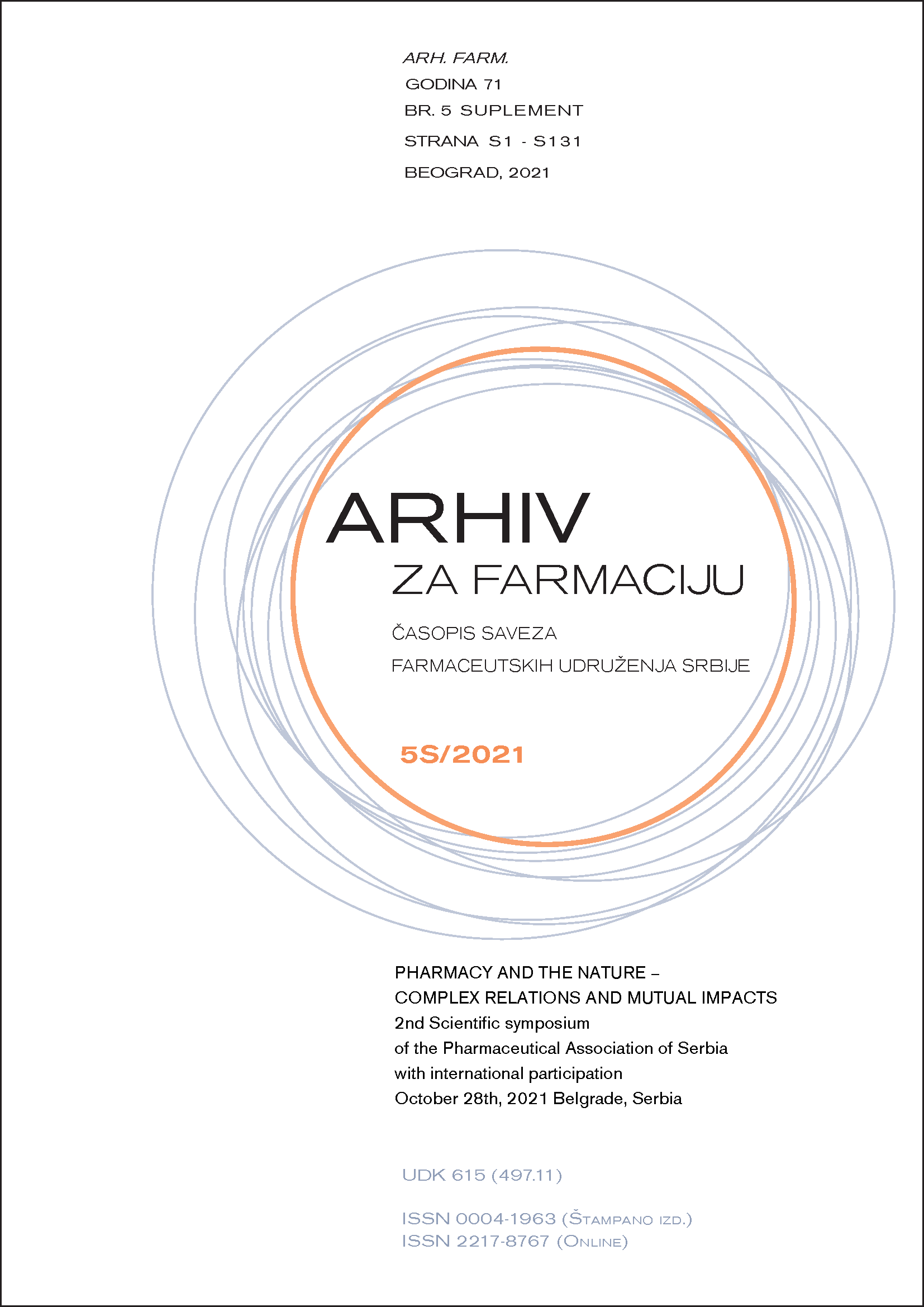TEXTURAL CHARACTERISTICS OF EMULGELS CONTAINING CELLULOSE DERIVATIVES
Abstract
Texture profile analysis (TPA) relates the mechanical characteristics of the samples to their sensory characteristics and provides objective insight into texture of the samples (1). By choosing the adequate thickeners, as well as their appropriate concentration, stability, efficiency, applicability and sensory properties of cosmetic emulsions, gels and emulgels are affected (2). Often, the use of a single viscosity modifying agent (thickener) does not provide satisfactory sensory parameters of the respective formulations, which opens possibility for using their combinations (3).
The aim of this study was to examine the textural characteristics of oil-in-water emulgels containing sodium carboxymethylcellulose (NaCMC) as a thickener in a concentration of 1% w/w or a combination of NaCMC (0.5% w/w) with HEC (0.5% w/w) and HPMC (0.5% w/w), respectively. For preparation of the emulgels, beside thickeners, the following ingredients were also used: Caprylic/capric triglycerides, Isopropyl myristate, Olive oil, Propylene glycol, Phenoxyethanol and Ethylhexylglycerin as preservative, and Cetearyl alcohol (and) Coco-glucoside and Myristyl alcohol (and) Myristyl glucoside as emulsifiers. Adhesiveness, cohesiveness and hardness are the textural parameters determined with CT3 Texture Analyzer (1). The textural analysis was performed at the time of preparation, one week and one and three months after preparation of the emulgels. The results obtained showed that creams containing HEC and HPMC in combination with NaCMC had lower values of adhesiveness, given that it can be concluded that the replacement of one part of NaCMC with another thickener led to a decrease of the stickiness of the prepared emulgels. The addition of the second polymer did not affect the cohesiveness of the emulgels, according to the similar values obtained for this parameter. The combination of NaCMC with other polymers caused lower values of emulgel hardness, which explains improved spreadability during rubbing. The obtained values show that the combination of these thickeners in the formulation of emulgels affects their textural characteristics and that by optimizing the ratio of used thickeners, the system structure with more favorable/desired textural and consequently sensory properties, can be formulated.

